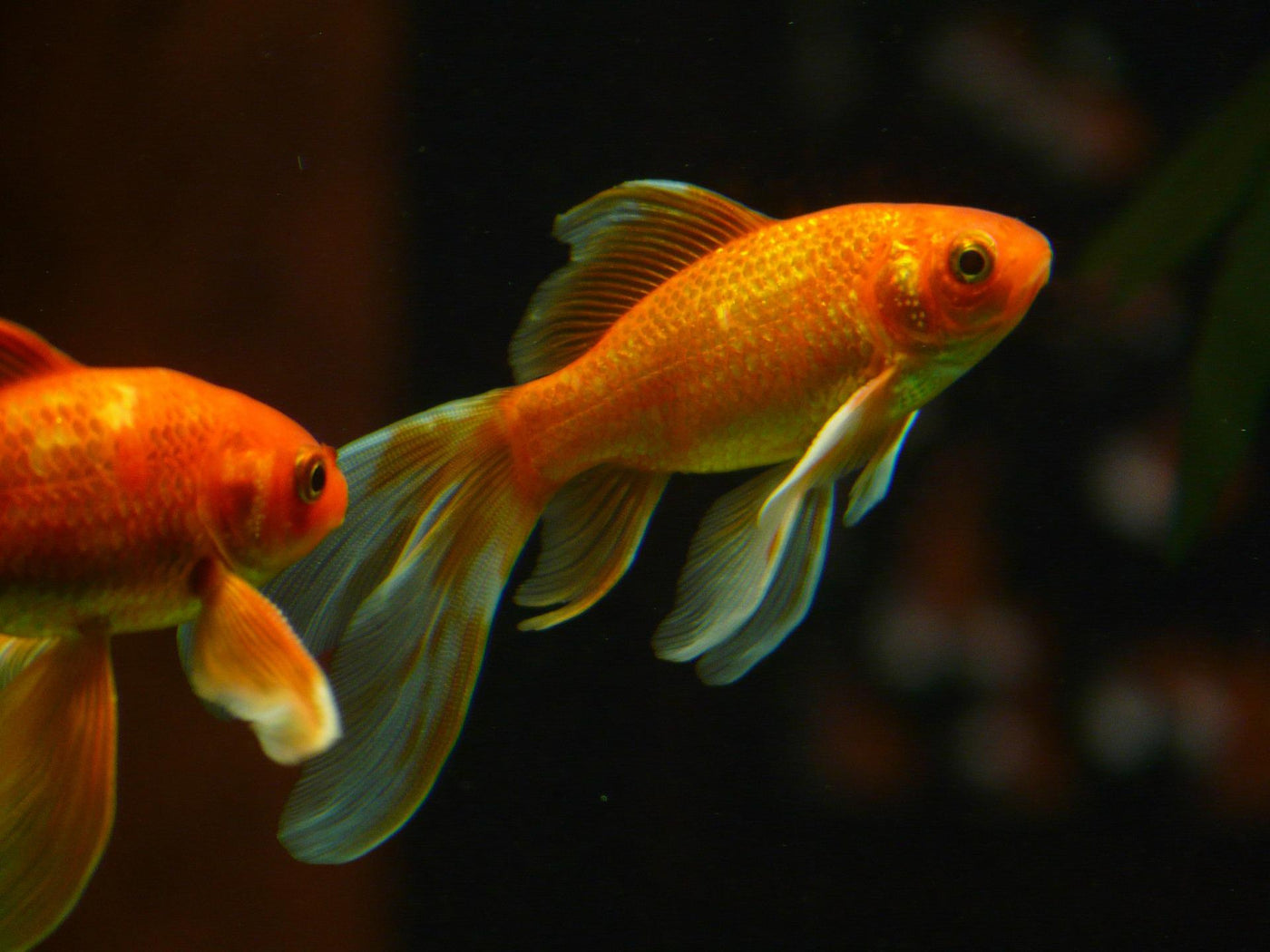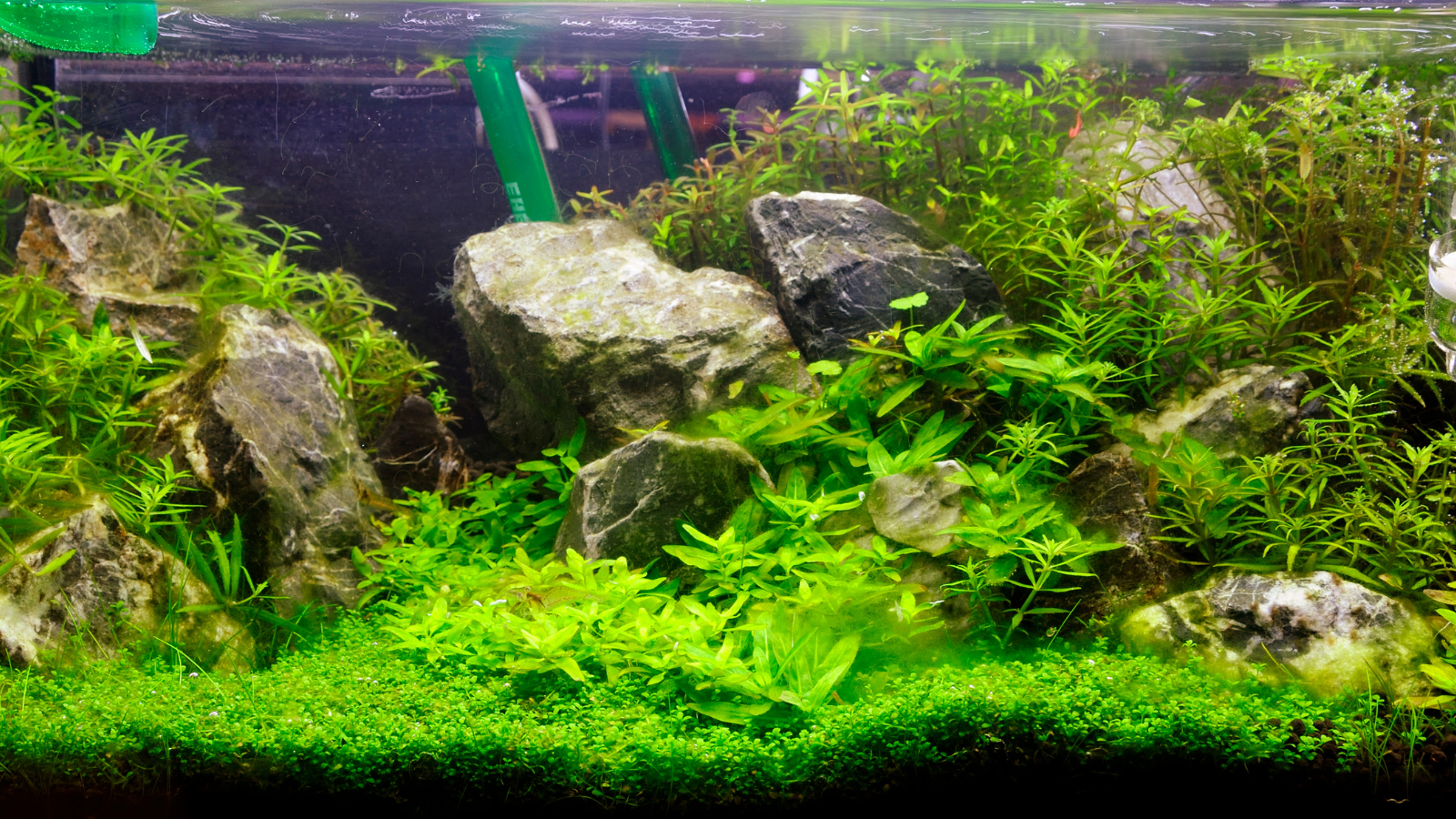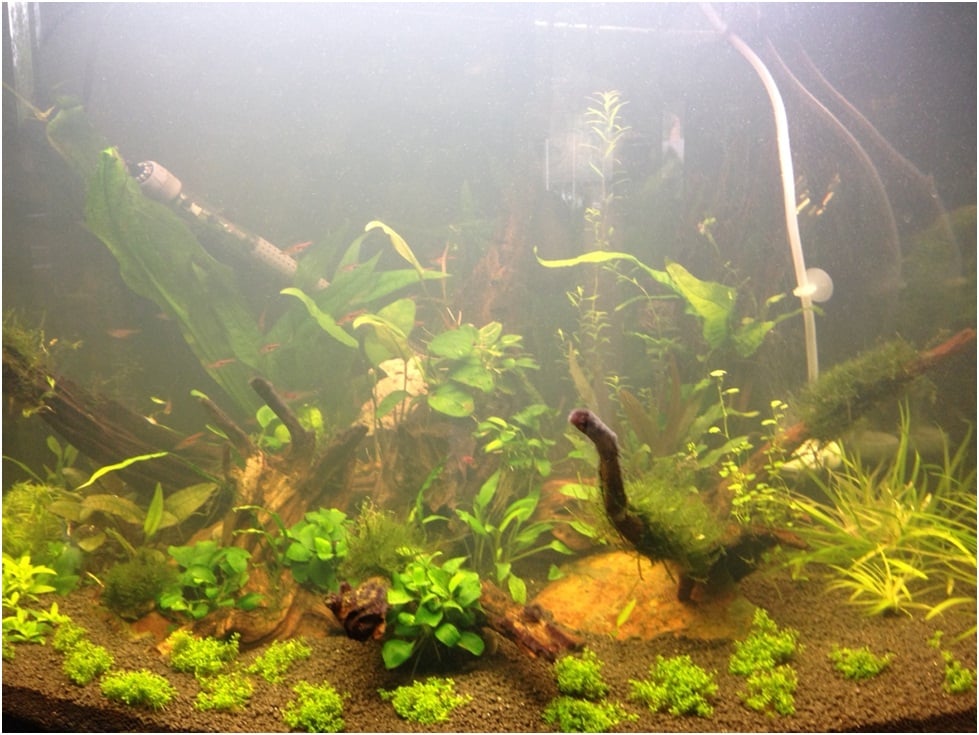
Gas bubble disease
Being a fish keeper means that from time to time we need to struggle with various fish diseases caused by introducing sick fish or plants to the aquarium or by unfavorable environmental factors. It's good to read about eventual fish diseases that may occur in your planted tank in case of their real development. Today we are going to introduce you to gas bubble disease which is caused by environmental conditions.
Sources of the disease and factors contributing to its occurrence
Gas bubble disease is most common in heavily lit aquariums during algae blooms. The reason is oxygen saturation during the day, which may exceed the optimal value up to four times, followed by a rapid decrease in its content at night. A temporary saturation of water with oxygen causes the fish's blood to become saturated with this gas. As the pressure equalizes between the water and air, the pressure of this gas equalizes between the blood of the fish and the water that flows through its gills. During this process, gas bubbles close the blood vessels of the fish and lead to ischemia of some organs, which may result in necrosis. Gas bubble disease can also occur when the fish are released into a tank with stagnant water coming directly from the water supply. Sometimes it also occurs in fish freshly moved from other tanks or transported under inappropriate conditions.
Another factor that can lead to it is the transport of fish in artificially oxygenated plastic bags. The resulting increase in gas pressure causes an increase in pressure in the fish circulatory system and the formation of bubbles that can cause blockages in the blood vessels.
Symptoms
In the first stage of the disease, the fish swim restlessly just below the water surface, they are clearly restless and very skittish. Sometimes it is accompanied by trembling of the fins. They become listless after a while. If gas accumulates in the swim bladder or digestive tract, the fish are bloated and taken to the surface. In large fish, you can see tiny bubbles of gas in the blood vessels of the fins and gills quite easily. In some cases, cloudy eyes or ragged fins can also be observed.
Treatment
After noticing symptoms of gas bubble disease, as soon as possible transfer the fish to the tank with the optimal oxygen concentration, which is 10-15 mg / l. If this is not possible, reduce the number of plants in the aquarium and apply strong water aeration using cubes with coarse pores (large bubbles). It is also good to limit the intense lighting. The main aquarium should be left to equalize the pressure between the atmospheric air and the saturated gases in the water. Within a few days, all symptoms of gas sickness should disappear in our patients, unless the changes in the body are too advanced (e.g. damage to the gills). Then we euthanize such individuals. After this period, we can move the fish back to the main aquarium and use appropriate vitamin preparations and water treatment preparations to strengthen their immune system
Prevention
Prevention of bubble gas disease is to control the amount of oxygen in the water. A skilled aquarist will only need to observe fish and water, but there are also suitable tests available in the aquarium trade. The correct location of the aquarium is also important. It should not be placed near a window or in a place of direct sunlight. You should also follow the principle of topping up the water only with standing water and use regular aeration. Moreover, avoid sudden changes in water temperature.
Summary
If your aquarium fish swim restlessly near to the water surface, be aware that it can be the symptom of gas bubble disease. Unfortunately, recognizing fish diseases is not an easy task because many of them have very similar signs at the beginning. That's why education and a lot of reading is important because the recognition can be easier then.


